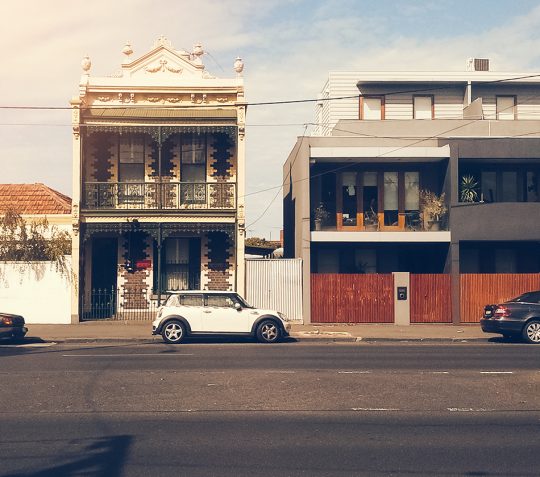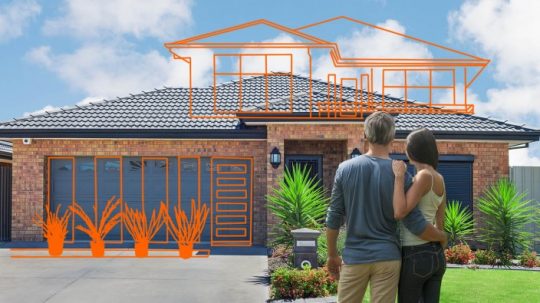If you’re thinking of investing in property, you’re probably really excited about the financial security and freedom it could offer. For one thing, you could make money from the moment you own it and rent it out. For another, it could help you grow that retirement nest egg and maybe even fund your lifestyle when you get there. It’s also generally seen as a safer investment than jumping into the share market (there’s a reason why we say ‘as safe as houses’).
Like any investment, there can be pitfalls and traps, and if you’re property-hunting with your heart instead of your investor hat, it can be hard to find the right property – the one that could give you all that financial freedom you’re after. Here are some warning signs and strategies that could help steer you towards the right front door.
Build a strategy and know your goals
Many people invest in a place with no real vision of what they want to do with it. To set yourself up among the most successful investors, it’s a good idea to clarify your investment goals and consider your strategy – then buy a property that meets all your requirements.
Ask yourself the following questions:
- Is your priority long-term capital growth and a retirement nest egg, or do you want to buy a renovator’s delight that you can fix up and sell for a quick profit?
- Are you looking to negatively gear the property and buy a house you think will go up in value over time?
- Or do you want to positively gear the investment and buy a property that gives you rental income that you can use as a tool for cash flow and income?
Each of these strategies will lead to very different investment properties – from the type of home itself to the location and the price. So before you start bidding at auctions, have a chat to your tax adviser or financial planner to get professional advice that will help you clarify your goals as well as any tax implications.
Choosing the right location
You might have an idea of places you’d like to live, or you might even know the trendy areas where rents are high right now. But remember that this is a financial decision, not an emotional one. That means finding the right property in an area with the right mix of reliable rental income and potential for capital growth.
Begin your search in areas with strong rental demand that are close to transport, schools, universities, business centres, and community facilities like parks and shops. For maximum capital growth, look beyond today’s hotspots to areas that are expanding. An area you feel could be about to take off and could have strong potential for growth might be one with redevelopments, infrastructure or transport improvements, new shops and cafes, new council projects and a lot of people moving in.
Once you’ve narrowed your search to a couple of suburbs, do your research to see what the area’s historic capital growth has been over the years, whether the vacancy rate is low and what the average rental returns are like. Getting a suburb report on the area could save you time here. It’ll give you a snapshot of the suburb’s key data and insights, along with estimated rental yields.
What sort of property do you want to buy?
Old or new. House or unit. High rise or apartment block. There are a lot of choices when it comes to the type of property you can buy. There’s no right way to go about it – this is where you can really do your thing. But many of the decisions you make will be dictated by your strategy, your borrowing power and the areas you’re looking in.
Here are a few tips to help inform your decision:
- On the whole, houses generally deliver greater capital growth and apartments generally provide better rental yield.
- Lower-density apartment blocks generally have better capital growth and lower overheads than high-rise apartments – unless there’s a magnificent view.
- Australian capital cities have so many new apartment complexes and housing developments that could allow you to save on stamp duty by buying off the plan. They also may provide you with tax depreciation benefits that apply to new buildings. On the other hand, older buildings tend to offer larger living spaces and can appeal to renters looking for a bit more charm and character. Which brings us to…
Know what tenants want
To help you choose your investment property, start by picturing the type of tenant you want to attract. What kind of home will appeal to them?
If it’s a couple with children, then a garden, extra bedrooms, and proximity to parks and schools will be important. Young professionals might go for a stylish terrace close to cafes, convenient amenities and shops, while university students may be looking for an apartment in a secure building close to transport, bars, restaurants and, of course, their campus.
Consider what sort of properties are in demand in certain renter demographics. For instance, international university students may prefer one-bedroom apartments over two-bedders. Talk to local real estate agents or property managers to get a feel for not just who you might rent to, but also what will attract them. And when you’re inspecting properties, keep an eye out for features with mass appeal that the vast majority of tenants look for. We’re talking things like a second bathroom, an internal laundry, a balcony, a lock-up garage, air-conditioning and built-in storage.
Talk to a specialist
Once you’ve found your ideal investment property, our ING home loan specialists can give you a clearer indication of how much you could borrow with the help of our borrowing power calculator – and help you make sure you’re not over-committing yourself. They can also help with home loan pre-approval, if you want to make an offer or bid at auction. Wherever you’re at in the process, we’re here to help. No obligations, just friendly support.



